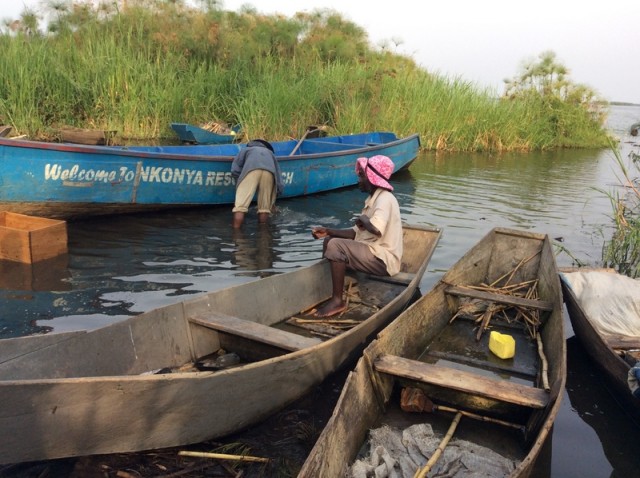
Measuring resilience to climate change in the Lake Victoria basin
28th September 2016
Just over a year ago the UK Department for International Development (DfID), with the Natural Environment Research Council (NERC) launched its ‘Future Climate for Africa’ (FCFA) project. This £20 million project, involving five research consortia, aims to “generate fundamentally new climate science focused on Africa, and to ensure that this science has an impact on human development across the continent”. As part of this initiative, Evidence for Development (EfD) is working with the University of Reading, Walker Institute and other leading institutions in the UK and Africa on ‘HyCRISTAL’, one of the five FCFA projects. HyCRISTAL is a multi-disciplinary study involving meteorologists, hydrologists, engineers, agronomists, fisheries experts and social scientists working in East Africa. The objective is to improve projections of the effects of climate change on rural livelihoods and urban infrastructure in the Lake Victoria basin, upgrading the evidence base for regional policy decisions.
Rural livelihoods work within the consortium is being led by the Walker Institute with EfD, and in July this year, a team from EfD and Reading travelled to Uganda to oversee the first in a series of rural studies. The team, which included EfD Africa-based associates Stella Ngoleka, James Acidri and Hosea Machuki, and regional partners from the universities of Gulu in Uganda and Maseno in Kenya, worked at sites on Lake Wamala and Lake Victoria, where information on livelihood activities was collected from fishers, farmers, local leaders and other workers around the lake. We also discussed institutional and regulatory issues affecting fishing practices with local stakeholders from community to district levels.
Our aim was to explore the capacity of different groups in the community to adapt and diversify their livelihood activities in the face of rapidly changing economic and environmental conditions. In the first study, the Individual Household Method was used to collect detailed household-level information on assets, sources of food and cash income, household demography and education levels. This was complemented by broader ethnographic enquiries into social networks, patterns of migration, use of savings institutions and people’s perceptions of hazards and risks. We also collected information on land use, use of water resources and access to sanitation. In the second study, the Household Economy Approach was used to gain an understanding of livelihoods in the zone adjacent to the lake in Mukono District. In this area, bananas (matooke), coffee and pig production are the main sources of cash income.
From these initial studies it is clear that whilst fish stocks are rapidly depleting due to over-fishing and poor regulation (exacerbated by pressures to deliver on export contracts), opportunities within the agricultural economy of the lakeshore hinterland are currently limited. Crop sales account for just under half of all cash income for all wealth groups in this area. Paid employment is largely in casual, agricultural labour, a source of income chiefly for the poor. Finally, off-farm work is largely found in brick making and charcoal burning – with adverse implications for the environment – and in brewing, retail and other trade and small self-employment activities.
The data we collected will be used to illustrate the effects of production and price changes on different sections of the population under different climate change scenarios, and will be incorporated in the HyCRISTAL climate and livelihoods data platform that is being developed as part of the project. Study findings will also be published in forthcoming HyCRISTAL research papers.
Categories: Climate change, Data, HEA, IHM, Livelihoods, Resilience, Uganda, Vulnerability assessment

Comments
No comments yet.
The comments are closed.